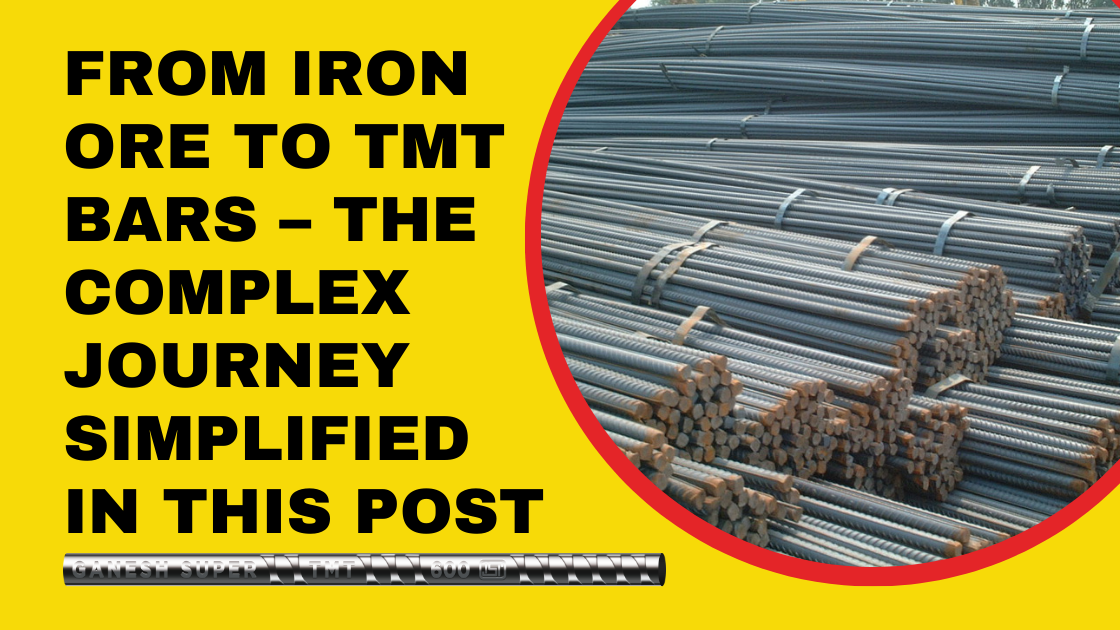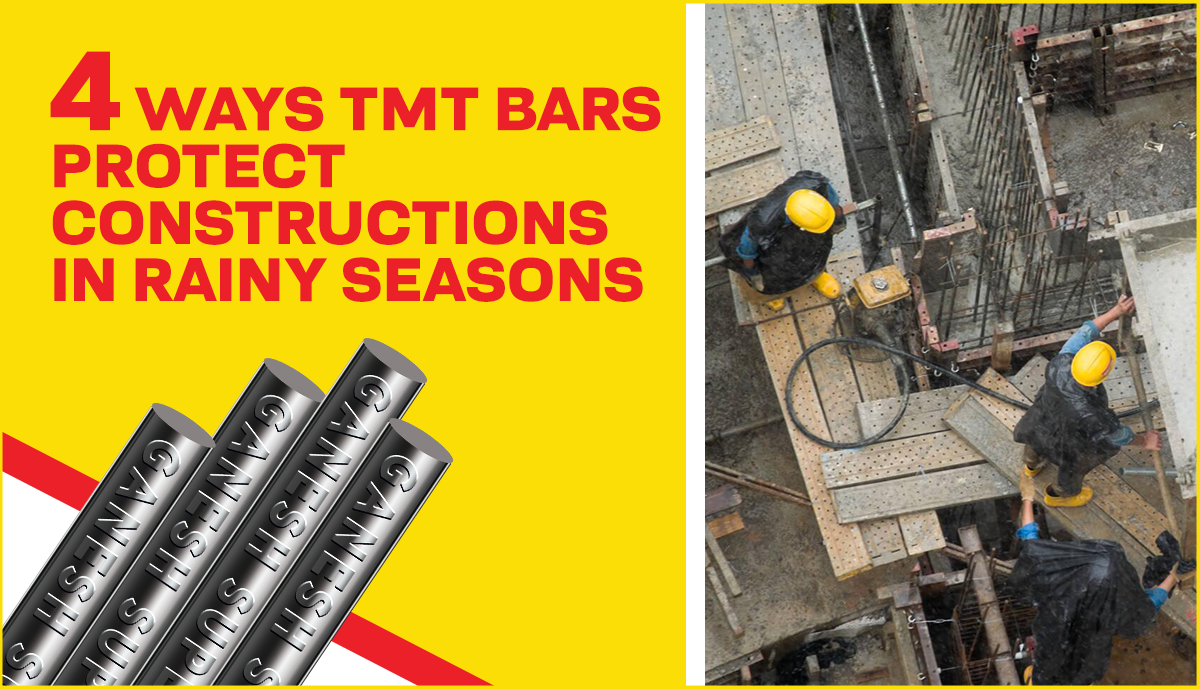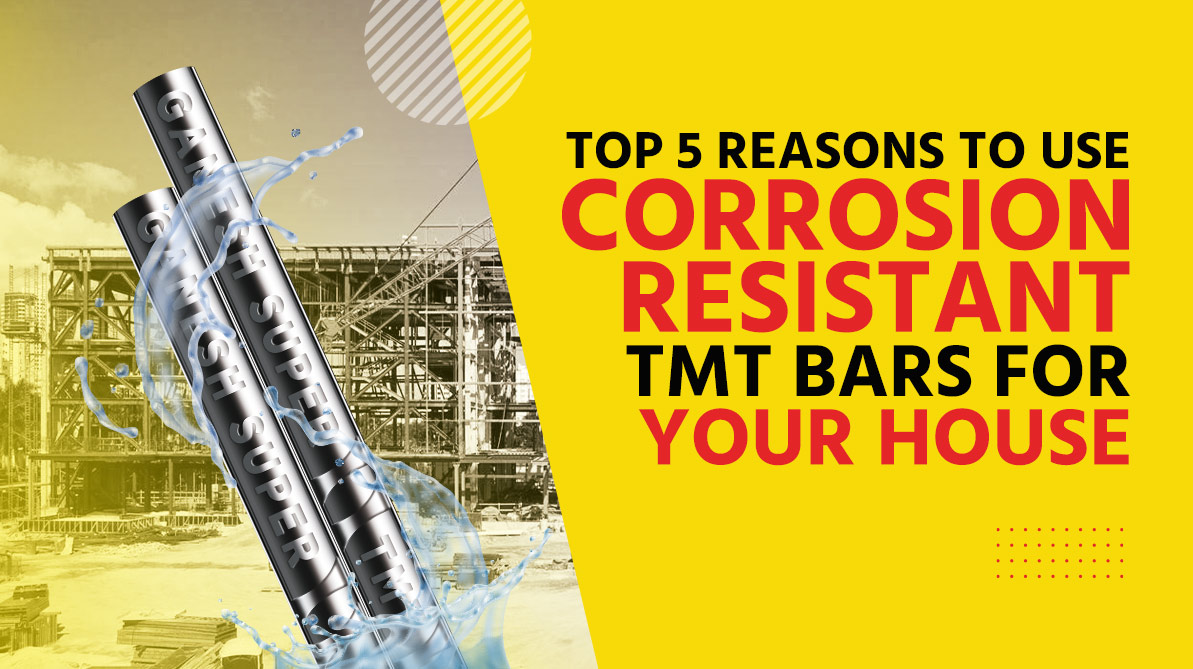TMT bars are known for their durability and strength. But did you ever stop to consider why they are so strong? There might be some reasons why the 21st-century construction industry embraces it as one of the prerequisite elements – right? And that’s why this post gives you a good understanding of the manufacturing process of TMT bars.
Whether you are a new or experienced construction professional, the need to understand and determine quality TMT bars is compulsory. So, now that you are searching for reliable TMT Bars suppliers for quality bars, it’s time you know everything about the manufacturing process.
Understanding the Complex Journey of Iron Ores to Transform into Strong TMT Bars
Behind every successful story, there are certain behind-the-story aspects. Similarly, behind the success of TMT bars lies the complex process. If you want to learn how iron ores are processed and manufactured as TMT bars, this post is for you.
How iron ore is transformed into TMT bars is itself a fascinating yet complex process. It involves various stages. But one should note one thing – the production of TMT bars entirely depends on the following aspects:
● The quality of raw materials used
● An automated or well-designed rolling mill stand
● A decent tempering and quenching technology.
You will understand everything in detail after reading this post. So, let’s learn more on this front.
Stage 1 – Extraction of Iron Ore
In this process, the raw materials are sourced from the respective locations. They are stacked and blended in the preferred proportion.
So you already iron ore is a naturally occurring mineral that comprises iron oxides. It’s the prime raw material used for producing steel and iron. Besides iron ores, there are other raw materials used for extracting iron, including these:
● Coke and Coal – These elements are derived from different minerals to manufacture TMT bars
● Fluxes (dolomite and limestone) – These sedimentary rocks, dolomite and limestone, have a higher content of magnesium and calcium carbonate (respectively). These materials are fluxes used in the manufacturing process.
Other materials are also used for improving the TMT bar’s quality, including:
● Copper
● Manganese
● Nickel
● Vanadium
● Chromium
● Molybdenum
Finally, the iron ore is purified. After this, the impurities are accumulated as slag separately.
Stage 2 – Converting Iron into Steel
The molten iron is used for the pre-treatment process. Here, oxygen is used in combination with carbon in the ore. The pre-treatment eliminates carbon dioxide from that particular mixture.
The steel (under-process one) is passed through the electric arc furnace. This further refines the composition.
When it is converted into steel in the converter, it ladles heating to refine the quality of steel. The molten steel is then poured into the casting machine. This produces billets (or pencil ingots) of the preferred size—now, coming to a significant step – casting.
In the casting process, the molten steel from the electric arc furnace is then transferred to the casting machine. Here, it flows into the moulds, and solidification occurs. The steel now achieves the shape of TMT bars.
Stage 3 – Undergoing the Thermo-Mechanical Treatment
Finally, the bars undergo thermo-mechanical treatment, for which they are known as TMT (or thermomechanical treatment bars). This step comprises three sub-stages, including the following –
Quenching
This is the step through which TMT bars achieve ductility. Furthermore, it ensures the required strength that these bars need to build long-lasting commercial and residential constructions.
When the hot rolled bars come out from the mills, they enter the water spray system. It’s better known as the Thermex System’. Here, the temperature of the steel bar’s outer layer decreases. This hardens the material. On the other hand, the inner core will remain flexible and hot. The whole process is termed as quenching.
Self-Tempering
Soon after the bar undergoes the quenching process, the bars cool down. Their core is at a higher compared to their outer layer. The heat is then transferred from the outer surface’s core. Then, the outer structure gets tempered. It results in the flow of temperature from the core to the outermost layer. This creates a structure better known as ‘tempered martensite’.
Atmospheric Coating
Finally, the atmospheric coating is the last step that is put on the cooling bed. The bars are then arranged to be cooled at regular temperature. During the process, the bars then turn into a defined structure – also known as ferrite-pearlite. The treatment used in this step makes the bar more weldable.
The final product’s cross-section determines the variation in the crystal microstructure. This has a strong, tough, and tempered martensite in the outermost layer. The layer is more refined and tough.
On the contrary, the rebar’s lower grades are then twisted soon after the cold temperature hardens the bar. This further increases the strength. Note that TMT bars don’t require any hardening explicitly since quenching accomplishes this need.
Finally-
Steel is the core of building construction. So, you must buy quality TMT bars from a wholesale manufacturer or supplier.
The thermo mechanical treatment used in manufacturing quality bars can improve the construction project. The above steps ensure TMT bars can withstand bending & rebending because of low carbon content and increased elongation. The bars are a safe and sustainable choice owing to their weldability, ductility, and bendability.
The reason why they are earthquake resistant is because of the soft ferrite pearlite core. The strength is achieved because of the martensite outer layer. The anti-corrosive property helps them achieve excellent bonding strength with concrete. Basically, these properties make TMT bars a fundamental component in the construction industry.
From ensuring structural integrity to providing building safety, these bars are extremely beneficial. Now that you understand the benefits of TMT bars through the manufacturing steps, you can select the best TMT steel bars wholesale dealers. Ensure that you check the properties of the bars before you buy them from the supplier. Consult a top-notch company that can ensure excellence and quality at every step of the TMT bar manufacturing process.





